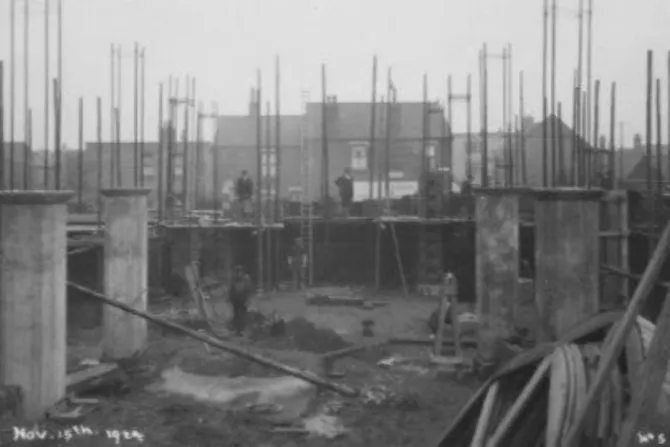CNA Staff, Sep 7, 2020 / 15:00 pm
The 1920s are known as the "Roaring Twenties" because they were years of economic growth and rising prosperity. But while the U.S. was booming, other countries were grappling with stagnation and mass unemployment.
The U.K. was emerging from a war in which it had lost 886,000 lives. After a brief boom when the First World War ended in 1918, unemployment rose to more than 10% and remained high throughout the following decade.
"Although the Great Depression proper began in 1929, the early and mid-1920s were also years of economic hardship as Britain sought to recover from the First World War," Fr. Stewart Foster, archivist of the Diocese of Brentwood in southeast England, told CNA.
While the Catholic Church struggled to respond to the crisis at a national level, local leaders found creative ways to help those who had lost their livelihoods.
Foster highlighted the example of Fr. Francis Gilbert, a priest of Brentwood diocese, who was serving in Grays, an industrial town on the River Thames, when he was posted to the nearby resort of Leigh-on-Sea in 1917.
Although the country was engulfed in war and money was scarce, Gilbert launched a church building fund.
"Fr. Gilbert was a tireless fundraiser and the fact that he came from a relatively wealthy family helped," Foster said. "However, having spent 14 years in Grays, he was well aware of the hardships of working people, especially the dock workers who suffered unemployment in the post-war years."
Despite the financial constraints, the priest had an ambitious vision for a new church. A frequent pilgrim to France, he wanted his new parish to become "an English Lourdes."
The church, designed in the Early English style, would have a scale replica of the Lourdes grotto, a weathervane of Our Lady appearing to St. Bernadette, a set of bells which chime the Lourdes hymn and a clock by the same craftsman who made the clock at Lourdes. And it would, of course, be dedicated to Our Lady of Lourdes.
To save money, Gilbert took on the roles of clerk of works and quantity surveyor himself.
"He utilized the services of unemployed laborers from Grays -- particular dockers -- many of whom were his former parishioners, paying them a weekly wage," explained Foster.
The church was opened officially on October 21, 1925. A few days later, Cardinal Francis Bourne of Westminster viewed the building and declared it "a miracle church."
As Our Lady of Lourdes and St. Joseph was opening, a foundation stone was being laid for a church hundreds of miles away in Ashton-in-Makerfield, Lancashire.
It would become the new Church of St. Oswald and St. Edmund Arrowsmith, sometimes described as the most beautiful Catholic church in England. The church was also built at a time of great local economic hardship.
Canon James O'Meara, a feisty Irish priest, engaged an architect to design a new church to replace one that was too small for the local Catholic community and too expensive to repair.
John Francis, who leads guided tours of the church, told CNA: "When the old church was pulled down and the new church was being built, it was a time when the miners were all out on strike. The anecdotal evidence says that they came and did the laboring for the stonemasons, who were the Howe brothers."
(Story continues below)
Visitors to the church can see the miners' handiwork if they look closely at the stones.
"The stone is either from Darley Dale in Derbyshire or locally from Parbold," Francis explained. "They are both sandstone but of different colors. So every stone that was laid was alternated. They were all hand-shaped, so they still have all the original chisel marks on. They didn't smooth them down to get rid of the chisel marks."
The church, which was opened in 1930, has stained-glass windows by master craftsman Harry Clarke and a reliquary containing the hand of St. Edmund Arrowsmith, a martyr hanged, drawn and quartered in 1628. It is thought to be the only church in the French Romanesque style north of the Loire River in France.
The architectural historian Nikolaus Pevsner described the church as "ambitious" and "impressive." But aside from its beauty, it shows how the Church can both advance its mission and provide work for the needy in times of economic crisis.
Summing up the achievement of Fr. Francis Gilbert in Essex, Foster said: "All in all, Our Lady of Lourdes, Leigh-on-Sea, is a monument in stone not only to one priests' devotion to Our Lady under her title of Lourdes, but also a remarkable witness to how in time of economic hardship the Church was able to utilize local labor in order to create a building of great beauty."
This article was originally published June 15, 2020 on CNA.


